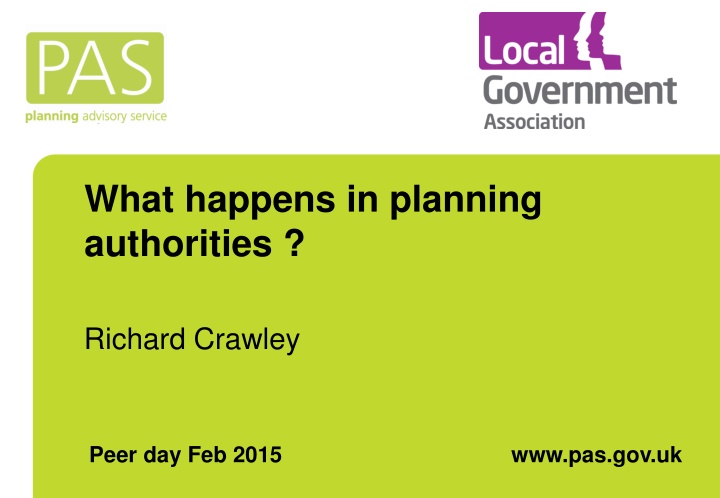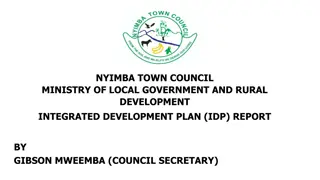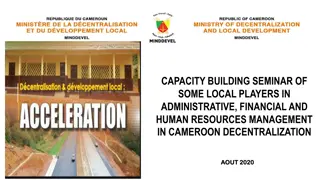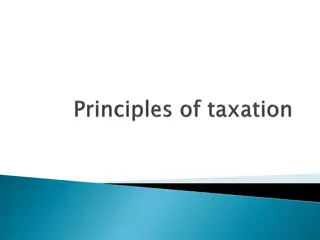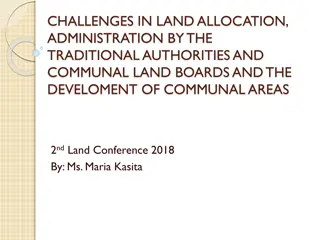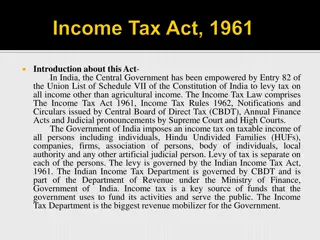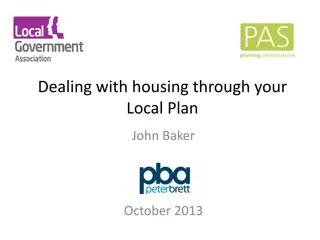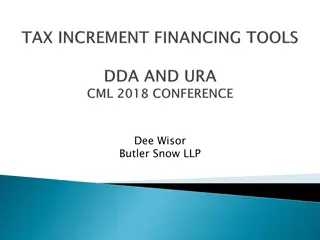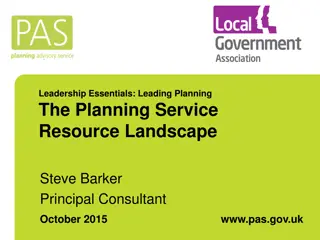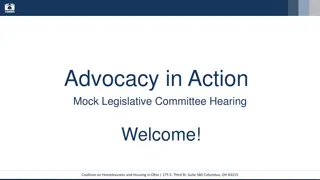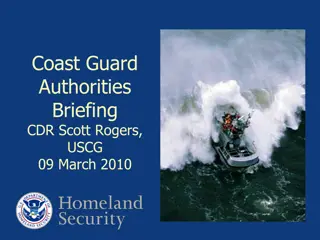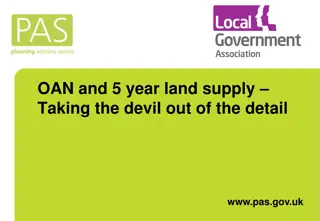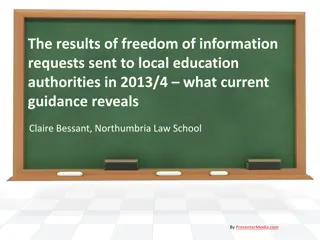Insights on Planning Authorities by Richard Crawley
Planning authorities are vital for urban development. Richard Crawley sheds light on the activities within planning authorities, including benchmarking, resource management, and productivity analysis. Through images and text snippets, the presentation delves into the challenges and strategies involved in the planning process. Topics such as the Planning Quality Framework, inventing new approaches, and major considerations in planning decisions are highlighted, providing a comprehensive overview for those interested in urban planning and governance.
Uploaded on Feb 27, 2025 | 2 Views
Download Presentation

Please find below an Image/Link to download the presentation.
The content on the website is provided AS IS for your information and personal use only. It may not be sold, licensed, or shared on other websites without obtaining consent from the author.If you encounter any issues during the download, it is possible that the publisher has removed the file from their server.
You are allowed to download the files provided on this website for personal or commercial use, subject to the condition that they are used lawfully. All files are the property of their respective owners.
The content on the website is provided AS IS for your information and personal use only. It may not be sold, licensed, or shared on other websites without obtaining consent from the author.
E N D
Presentation Transcript
What happens in planning authorities ? Richard Crawley Peer day Feb 2015 www.pas.gov.uk
Overview 1. Benchmark roundup Inventing the art Resources Productivity Customers Reflections 2. Planning Quality Framework Is it any good ? * One-off presentation alert *
Benchmark roundup Benchmarking since 2009 276 councils participated in total Confidential, but valuable dataset Publish aggregate as a state of the nation Before we forget; for the benefit of the future Need to find the right tone Warts n all, but useful to councils Your view is the one that matters
Inventing the art We had to make the basic building blocks What was the work called ? ( Q codes had not kept up) What were our tasks called ? (and which were value ?) There is a value in this framework We stole from building control Productive hourly rate = 50 Compare / contrast with pre-app charges (!)
Resources =Primary focus (we were preparing for fees) Big decisions What was supposed to be covered by the fee ? and what was RSG ? Consequences to these decisions And not just for planning departments Vulnerable to workload fluctuations ? Or broader council spending pressures ?
Majors = profit. Avoid conditions ! cost of processing per app fee per app at time of benchmark application count Major non residential All dwellings Minor non residential Householders Heritage All waste All minerals All others Conditions All app types 2149 14162 20999 48020 11981 2,841 1,664 783 408 449 4,155 622 385 268 589 6,277 1,293 410 131 2 58 144 5,137 1,110 158 93 353 48668 12540 158721
Productivity We are not updating the 150 cases per officer thing In the end, we have caved in It s gone down Awkward. Work types ? Bloat since 2002 ?
Productivity revisited In 2002, it was professional case officer + admin types. Now less differentiation. Not cases per DC officer, but cases per human Derives total head count = less wiggle room In the ODPM study, this was less than 100
Drivers of productivity Large authorities = higher productivity Work mix = biggest impact Organise against workload of high numbers of simple applications. Fast track. Often urban. Plus local factors (eg contamination)
Customers Individual councils failed to get enough volume to allow confidence In aggregate we had clear messages Talk to us, generally. It s just manners. Talk to us *especially* when there are issues We (generally) fail on customer care These are not high volume environments, but we fail because we don t acknowledge WIP and target culture
Reflections (on LPAs) Massive shift in understanding Financial literacy National indicators hide almost everything about performance Planning work needs to be unpicked to be understood Subsidy represents a risk to development Communication is often weak
Reflections (on benchmarking) Sustained collaborative effort Fantastic advert for sector led work Great partnership with CIPFA Raw data is great Allows you to ask questions late Benefit beyond improvement tool Demonstrate excellence Difficult to count things in policy
Benchmarking is dead. Long live PQF. The basic building blocks have been adapted and recycled into the PQF 1. More focused on customers 2. Internal management tool / external declaration 3. Not an annual snapshot, but a continuous process 4. We want it to become a badge . Over time.
Applications Surveys Quality Simple quality measures Staff Once/yr Back office data Each qtr Amenity groups Once/yr Councillors Once/yr Applicant Each decision Big scheme quality measures Neighbours Each decision Mapping 1/off Service Head Once/yr map Quarterly summary Quarterly summaries Quarterly summaries Annual report
Customer Surveys Agents, Applicants, Neighbours, Peers Staff, councillors, amenities Tied to an individual application Help, Time, Information, Straightforward.
Customer Surveys We may be slow, but we offer a quality service This allows you to test, prove Same questions nation-wide Early days
survey results Application Ref: HA/FUL/4456/14
Plus head of service survey Things are different. Why ? ICT ? Organisation ? How happy are you ? What are your plans ? Collaborations ? Shared approaches ?
sampled Everyone has same application count Less mental juggling
"Boxplot vs PDF" by Jhguch at en.wikipedia. Licensed under CC BY-SA 2.5 via Wikimedia Commons - http://commons.wikimedia.org/wiki/File:Boxplot_vs_PDF.svg#mediaviewer/File:Boxplot_vs_PDF.svg
"Boxplot vs PDF" by Jhguch at en.wikipedia. Licensed under CC BY-SA 2.5 via Wikimedia Commons - http://commons.wikimedia.org/wiki/File:Boxplot_vs_PDF.svg#mediaviewer/File:Boxplot_vs_PDF.svg
Hastings. End to end days. 12,000 cases compared using 30 numbers
More to come Headcount Investment [need more testing]
What does it prove ? Hastings is Struggling financially. Cannot get close to cost recovery Getting busier Quicker than its peers [Results of survey tbc] They might Investigate refusals. Lower edge of group. Ask bournemouth about refunds / free goes Have a grown-up think about funding
PAS Planning Quality Framework = consistent, relevant information to benchmark performance' (p12):
Solution in search of a problem ? Purpose Routine Value Or do something else Use it or lose it ?
